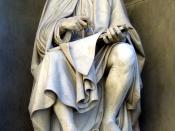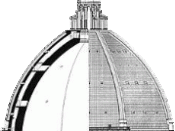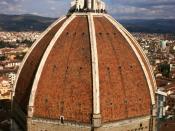Renaissance Art and Architecture, painting, sculpture, architecture, and allied arts produced in Europe in the historical period called the Renaissance. Broadly considered, the period covers the 200 years between 1400 and 1600, although specialists disagree on exact dates. The word renaissance literally means 'rebirth' and is the French translation of the Italian rinascita. The two principal components of Renaissance style are the following: a revival of the classical forms originally developed by the ancient Greeks and Romans, and an intensified concern with secular life--interest in humanism and assertion of the importance of the individual. The Renaissance period in art history corresponds to the beginning of the great Western age of discovery and exploration, when a general desire developed to examine all aspects of nature and the world.
During the Renaissance, artists were no longer regarded as mere artisans, as they had been in the medieval past, but for the first time emerged as independent personalities, comparable to poets and writers.
They sought new solutions to formal and visual problems, and many of them were also devoted to scientific experimentation. In this context, mathematical or linear perspective was developed, a system in which all objects in a painting or in low-relief sculpture are related both proportionally and rationally. As a result, the painted surface was regarded as a window on the natural world, and it became the task of painters to portray this world in their art. Consequently, painters began to devote themselves more rigorously to the rendition of landscape--the careful depiction of trees, flowers, plants, distant mountains, and cloud-filled skies. Artists studied the effect of light out-of-doors and how the eye perceives all the diverse elements in nature. They developed aerial perspective, in which objects become increasingly less distinct and less sharply colored as they recede from the eye...


